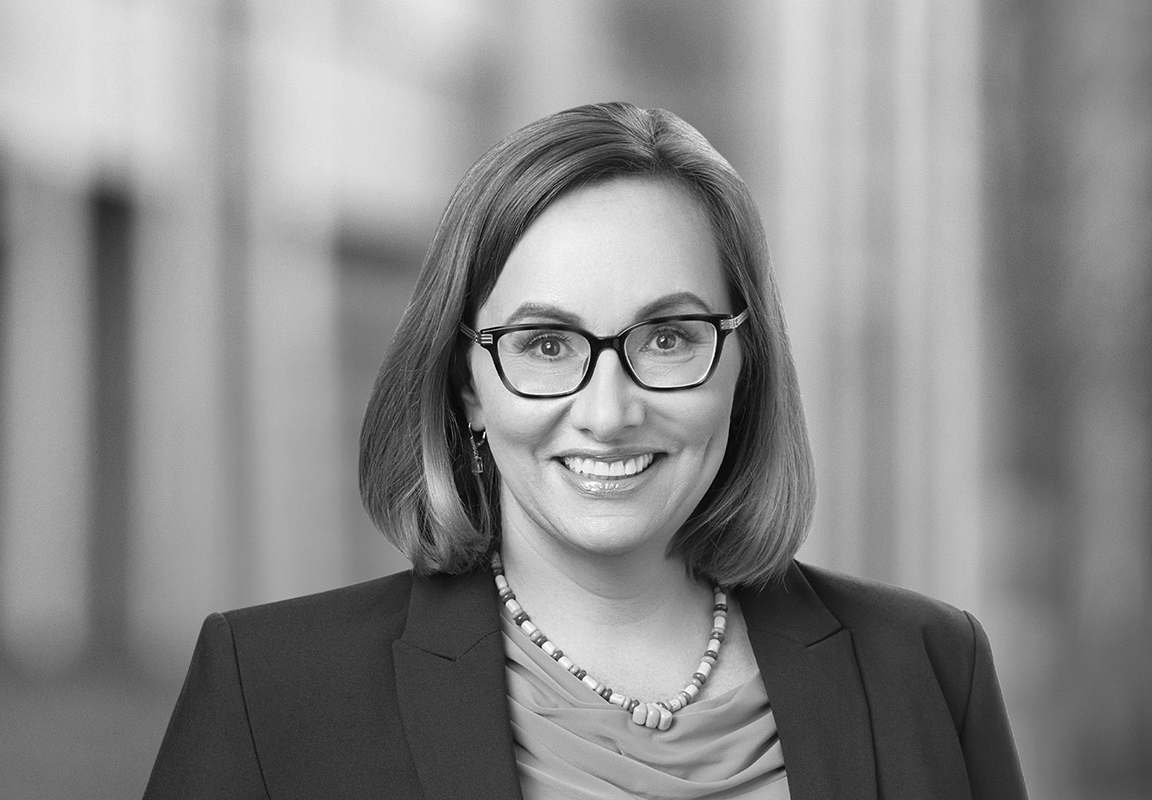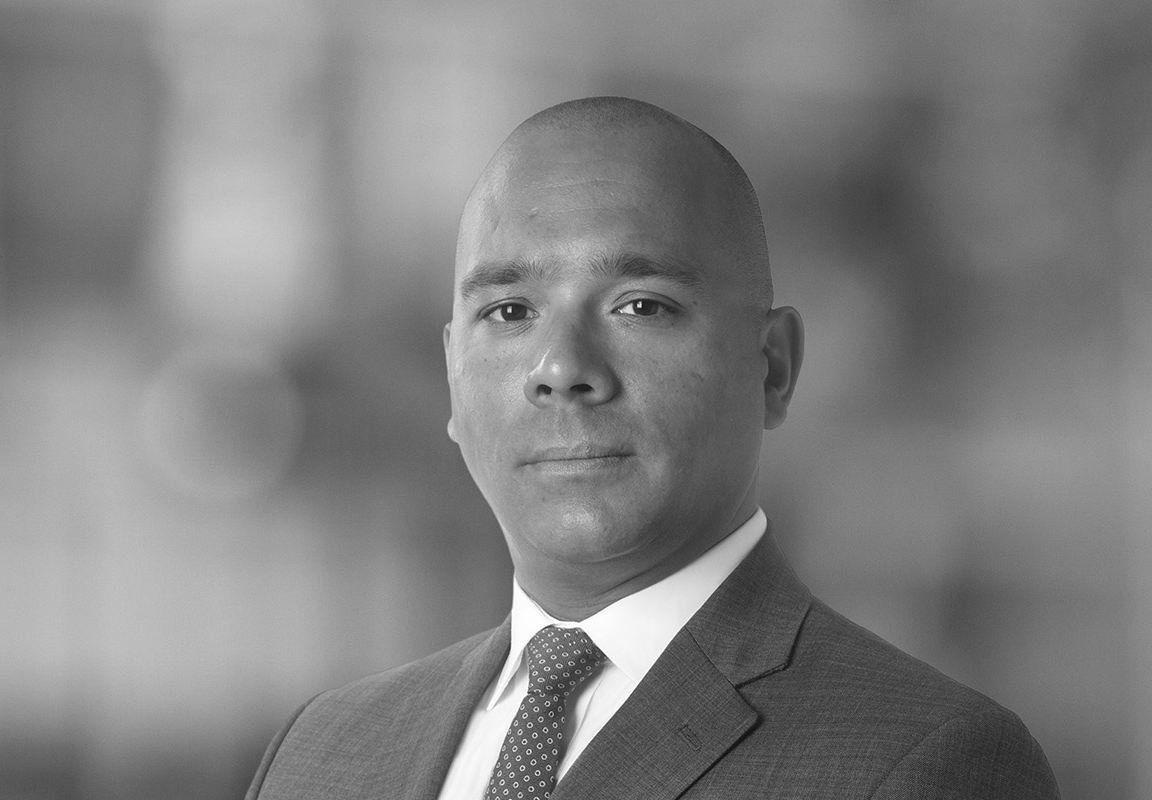
US Finance Agencies in Africa
As President Biden and other G7 leaders expressed a shared vision for global infrastructure development, Africa has been a major focus of the U.S. development finance and export credit agencies.
10 min read
The 5 April 2021 edition of our Africa Focus publication highlighted the ways in which African development finance institutions (DFIs) have responded to the COVID crisis, and the manner in which two European multilateral DFIs, EIB and EBRD, have increased their investments in sub-Saharan Africa.1 Since the inauguration of Biden's administration, and as public announcements during the recent G7 meetings confirm, the region is also becoming a notable focus of U.S. agencies involved in development and export finance.
This article examines recent initiatives by U.S. agencies to support private sector investment in Africa. We examine in particular, the work of the United States International Development Finance Corporation ("DFC"), as the lead U.S. development finance agency, and the work of the Export-Import Bank of the United States ("US EXIM"), as the U.S. export credit agency.
Recent DFC Initiatives
News that the United States International Development Finance Corporation (DFC) will "double down"2 on Africa is welcome news for a region that was already an important focus for the DFC. As of the end of 2020, DFC had roughly $8 billion (around 25% of its total portfolio) invested across more than 300 projects on the continent, and the region was at the forefront of agency-wide initiatives including Connect Africa, 2X Africa, and the Global Health and Prosperity Initiative. These initiatives seek to address critical infrastructure needs, expand access to healthcare, energy, and technology; and advance financial inclusion, particularly for small businesses and women entrepreneurs. In the past two years, DFC's deal-making capabilities in Africa have been strengthened in multiple ways:
- First, the BUILD Act has provided the agency new capabilities for equity investment and to partner with other U.S. agencies to provide technical assistance. DFC's predecessor, OPIC provided mainly senior debt products and political risk insurance, both of which were well-suited to relatively mature companies and projects that can provide immediate cash flow for repayment. OPIC nonetheless found ways to help entrepreneurs and early-stage innovators, including through loans to investment funds (which, in turn could invest in innovative companies) and the Portfolio for Impact (allowing for smaller and higher-risk loans for highly developmental projects). DFC has continued these programs, but can now also provide technical assistance to scope out and test innovative ideas, and provide equity capital, to help a company get on its feet.
- Second, driven in part by the historic challenge of the COVID pandemic the agency and its peers have increased their collaboration. Announcements from President Biden and other G7 leaders in support of the Build Back Better World (B3W) Initiative,3 suggest that cooperation and collaboration may continue beyond the pandemic. Historically deal-sourcing in Africa has been a challenge, with DFIs from various countries pursuing a limited number of high-quality infrastructure and energy projects. During the COVID crisis, however, DFC began meeting weekly with peer DFIs to coordinate approaches and leverage their combined resources, with concrete results. Evidence of DFC and other DFIs working together include transactions arranged by IFC (the private sector arm of the World Bank Group) in which DFC and European DFIs are participating together as well as DFC's on-lending to Africa Finance Corporation (AFC), an African-based multilateral, to tackle infrastructure deficits on the continent. This partnership combines DFC funding with AFC's regional know-how and builds on the collaborative approach the two agencies have taken in the past, including to help source deals for the Power Africa initiative.
- Third, DFC has increased its own on-the-ground presence through the Africa Investment Advisors Program. DFC has deployed regional officers across Africa to provide an on-the-ground presence for deal origination and continues to build on the past few decades of work in coordinating more closely with other U.S. agencies (MCC, USAID and USTDA).4 Efforts include working with U.S. embassy and consular staff to conduct town halls with businesspeople across the African continent.5 These programs raise awareness of DFC's activities and provide the agency with insights into local financing needs.
- Fourth, DFC has refocused its priorities, not just on lower and lower-middle income countries but also on sectors that show great potential across the continent: healthcare, ICT, off grid energy, and women-led investment. As a result, Africa is the focus of multiple DFC initiatives including:
- Connect Africa. Through Connect Africa, DFC seeks to invest $1 billion to strengthen connectivity on the continent to further its integration with the global economy. Areas of focus include telecommunications and internet access,6 value chains that connect producers of raw materials with end users, and essential infrastructure such as roads, railways, ports, and airports.7 Notable among these projects is a recent $100 million loan to Africell to increase mobile phone and internet service in the Gambia, Sierra Leone, Uganda, and the Democratic Republic of the Congo.8
- 2X Africa. DFC seeks to catalyze $1 billion of investment in projects that are owned by, led by, or provide a product or service that empowers African women.9 Notable amongst these projects on the continent are loans that help small-holder farmers (more than half of which are women) improve their yields, insure their crops, bring products to market, and increase resilience in the face of climate change and the COVID crisis.
- Health and Prosperity Initiative. Through its Health and Prosperity Initiative, the agency is working to invest $2 billion (worldwide) in projects that bolster health systems, support infrastructure development, and expand access to clean water, sanitation, and nutrition.10 Examples include a $781,000 guaranty for Embu Water and Sanitation to improve the water supply for 100 schools, 15 clinics and 50,000 people in rural Kenya,11 a $5 million loan for dialysis centers across East Africa,12 loans for entrepreneurial companies supporting innovations in vaccine distribution,13 and multi-lender supported facilities to support medicine production.
Recent US EXIM Developments
The Export-Import Bank of the United States (EXIM) is the export credit agency (ECA) for the United States, and its mission is to support American jobs by financing the export of goods and services from the United States to international markets. From 2009 - 2019, EXIM supported $12.4 billion of transactions to sub-Saharan Africa and the region is home to EXIM's largest financing commitment to date. Moreover, EXIM is a long-time player in Africa, with experience dating back to the 1940s. The agency has operated in 44 of the 49 countries of sub-Saharan Africa.14 Products include export credit insurance, working capital loans and term loans.
Promptly following its re-authorization, EXIM approved two prominent deals in Africa. In March 2020, it approved a $91.5 million transaction for electrification in Senegal.15 Two months later, the agency approved its largest transaction to date: a $4.7 billion direct loan to an integrated liquefied natural gas (LNG) project in Mozambique, the largest commitment amongst the 20 or so other ECAs and development finance institutions providing an aggregate of $16 billion in loans.16 EXIM representatives have emphasized that this type of support is important to maintain U.S. competiveness in the region.17
Africa is a key focus for EXIM's program on Transformational Exports, which was established by law in December 2019 and provides the agency with tools to allow U.S. exporters to compete more effectively with Chinese exporters.18 The Program has the aim of supporting U.S. innovation, employment, and technological standards globally in ten transformational export industries, including artificial intelligence, 5G, biotechnology, and renewable energy. The law charges EXIM with a goal of reserving not less than 20 percent of the agency's total financing authority (i.e., $27 billion out of a total $135 billion) for support made pursuant to the program.
This program shows great promise, but full realization of such promise may require adjustments in US content requirements, in connection with which EXIM has been soliciting industry feedback. Cloud computing, mobile payment solutions, energy storage and smart infrastructure have great potential in Africa, as do technological advancements, but, in many cases it is hard to properly demonstrate and value the role of U.S. content in such projects. Changes in content policy remain to be seen and are likely to be finalized only after high-level political appointees and board members are in place.
Another potential area of focus for EXIM is deal-sourcing. Because the agency is demand-driven, the portion of its portfolio focused on Africa depends on applications for financing in the region. EXIM's leading role in whole-of-government initiatives including Prosper Africa and Power Africa helps ensure that the agency remains at the top of the mind for developers of, and suppliers to, high quality projects throughout the region. The agency also benefits from guidance from a sub-Saharan Africa Advisory Committee, made up of government and industry representatives with extensive experience of the continent,19 This committee meets two times a year to examine EXIM's programs and policies designed to support the bank's engagement in sub-Saharan Africa.
Continuity and Change: Evolution of Agency Focus under the Biden Administration
Given the considerable changes taking place in U.S. politics, it may seem that every federal agency's outlook is bound to change significantly depending on the priorities of the administration This would present a challenge for securing funding from U.S. agencies for infrastructure in Africa: it takes a good deal of time to develop any project.20 Fortunately, however, the DFC and US-EXIM have shown continuity in their focus on African deals: The "Prosper Africa" Initiative during the end of President Trump's term built on, and did not supplant or replace the "Power Africa" initiative started under the Obama Administration. With the recent announcements at the G7 summit, especially on economic recovery and sustainable infrastructure in Africa, we expect more emphasis on executing deals across the continent and, in particular, on seeking to increase investments in renewables and climate-linked projects. Whether this eventually means carbon-intensive projects will be off-limits remains to be seen. Recent pronouncements suggest that, on a selective basis, U.S. agencies will continue to fund power projects using transition fuels such as gas and downstream projects where developmental needs or other policy priorities are sufficiently compelling.21 Given the huge demand for energy and infrastructure development in Africa, U.S. overseas investments in fossil fuel-related industries may remain significant even as U.S. agencies scale-up their climate finance initiatives to support economic growth across the continent.
1 European multilateral development banks in sub-Saharan Africa
2 G7 Development Finance Institutions and Multilateral Partners to Invest Over $80 Billion into African Businesses Over the Next Five Years
3 DFC Announces Support for New Build Back Better World Initiative, Bolstering Global Infrastructure Investments
4 USAID: Powe Africa
5 COO David Marchick's discussed this program in his April 23, 2021 debrief with the Center for Global Development.
6 Investments in mobile connectivity have important follow-on effects (see, e.g. Exploring the Relationship Between Broadband and Economic Growth) and this is particularly true in Africa, where mobile payments solutions have increased financial inclusion but availability is uneven and still out of reach in some of Africa's poorest countries and communities. See, e.g., Five Strategies for Mobile-Payment Banking in Africa (approximately 400 million consumers in sub-Saharan Africa use mobile payment banking systems to handle $300 billion worth of mobile money transactions)
7 DFC: Connect Africa
8 Expanding mobile connectivity in Sub-Saharan Africa
9 DFC: 2X Women's Initiative
10 Elevating DFC's Climate Ambition, Debrief by David Marchick, U.S. DFC Chief Operating Officer, April 29, 2021, hosted by the Center for Global Development. Elevating DFC's Climate Ambition: A Debrief with COO David Marchick (remarks around minute 26).
11 Helping a Kenyan village expand access to clean water
12 DFC Advances COVID-19 Response in Africa with $5 Million Investment in Africa Healthcare Network
13 Supporting vaccine distribution to remote locations in developing countries
14 For examples of projects supported, see, e.g., Case Study – Africa: How the USG Helped an Illinois Small Business Succeed, US-EXIM Annual Conference September 2020
15 EXIM Board Approves $91.5 Million in U.S. Export Financing for Renewable Energy Rural Electrification Project in Senegal That Supports 500 U.S. Jobs Across 14 States
16 EXIM Board Unanimously Approves Amended Financing of U.S. Exports to Mozambique LNG Project and Support of More U.S. Jobs in Additional States
17 EXIM Urges Swift Action on U.S. Transformational Exports in 5G, Energy
18 US EXIM: 'We have a new mandate to take China on around the world'
19 EXIM Announces Members of the 2020-2021 EXIM Sub-Saharan Africa Advisory Committee
20 Cf. Emphasis on the need for patience in discussion from Kyle Jackson of US-EXIM, minutes 41-43, Case Study – Africa: How the USG Helped an Illinois Small Business Succeed (US-EXIM Annual Conference September 2020)
21 Elevating DFC's Climate Ambition, Debrief by David Marchick, U.S. DFC Chief Operating Officer, April 29, 2021, hosted by the Center for Global Development (remarks around minute 26).
White & Case means the international legal practice comprising White & Case LLP, a New York State registered limited liability partnership, White & Case LLP, a limited liability partnership incorporated under English law and all other affiliated partnerships, companies and entities.
This article is prepared for the general information of interested persons. It is not, and does not attempt to be, comprehensive in nature. Due to the general nature of its content, it should not be regarded as legal advice.
© 2021 White & Case LLP


